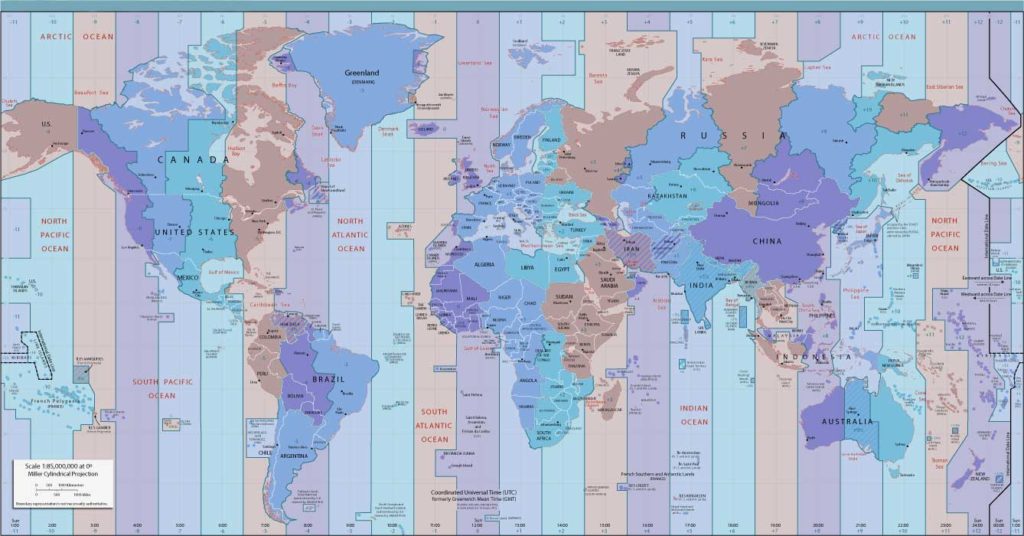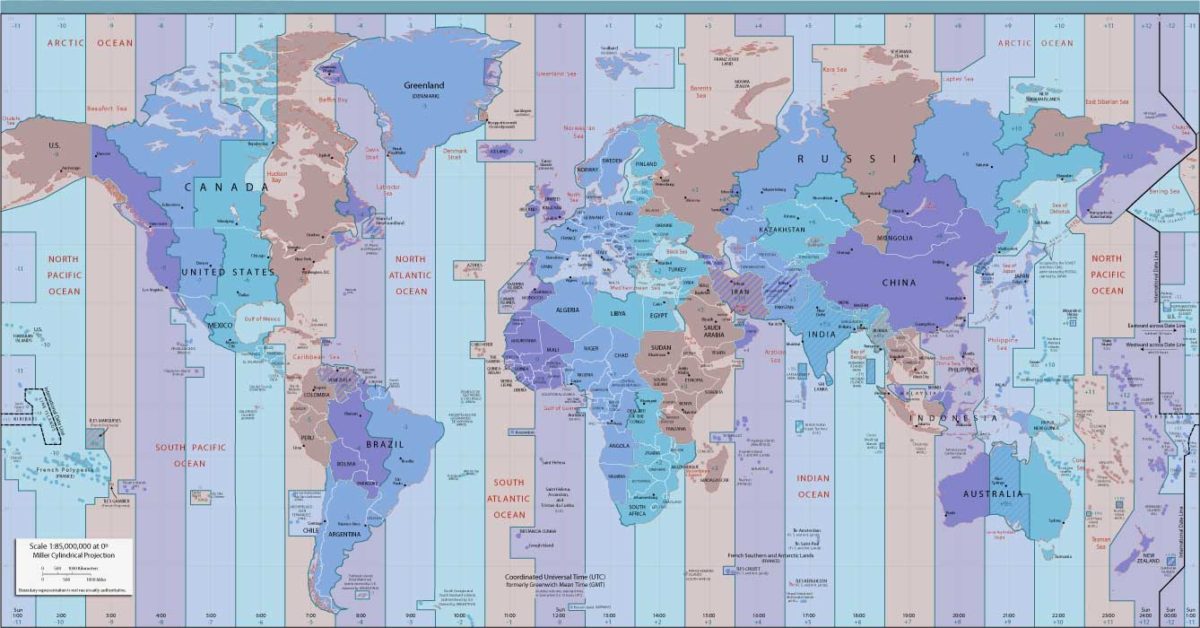Why Do We Need a Time Zone World Map
The planet earth is broken up into regions we call time zones. They basically follow the cycle of the sun as the earth spins and different parts of the world face the sun. Humans need to sleep and we generally do this activity at night time. In this era of transcontinental corporations and business enterprises, time zones are more important than ever.

The world timezone map begins and ends at Greenwich a suburb of London in the UK. The map is based around what was formerly known as Greenwich mean time but is now known as Coordinated Universal Time. The World Map we have above is centred in Greenwich and to the left and right are the farthest points away from this line and are -11 hours away from Coordinated Universal Time. The countries in this furthest timezone are territories like American Samoa and the Jarvis Islands. Interestingly it is these tiny little countries that are the first to celebrate new years every year.
Each timezone is one hour in length so there are 24 separate time zones as there are twenty four hours in a day. You can see that the each timezone on the world map above is not straight. This is because time zones only apply to landmasses above the oceans and will generally try to take sovereign territories into account. Islands are generally included with the large landmasses that are nearby although in cases like Indonesia that is one big archipelago there are multiple time zones spread across the country.
How Many Time Zones Are There In Europe?
There are 4 time zones in Europe. The UK, Portugal, Ireland and Iceland are grouped together in the 0 UTC. Norway, Sweden, Denmark, The Netherlands, Belgium, Spain, Italy Germany, Luxembourg, Czech Republic, Slovakia, Austria, Switzerland Poland, Hungary, Slovenia, Croatia, Bosnia and Herzegovina, Serbia, Montenegro, Kosovo, Albania and Macedonia are all grouped together in +1 UTC. Finland, Estonia, Latvia, Lithuania, Ukraine, Moldova, Roumania, Bulgaria and Greece are grouped together in +2 UTC. Finally we have Russia, Belarus and Turkey grouped together in +3 UTC, although it is still debatable if Turkey is considered part of Europe.
There have been arguments to increase the length of each time zone to 2 or 3 hours. Pundits feel this would simplify things as it would reduce the number of time zones and countries like the USA would only have 1 time zone and just use daylight saving to adjust for daylight hours. Realistically this would actually just make things more difficult for individuals even if business would probably applaud the innovation.
Speaking of business and time zones. There are places around the world like Adelaide in Australia that should technically be 1 hour behind the large and influential cities of Sydney and Melbourne but have agreed to adjust the time zone purely for commercial reasons. So instead of being +9 UTC, for all intense and purposes Adelaide is +9.5 UTC.
The International Space Station is travelling at 17,500 mph (28,000 km/h) and can do 16 revolutions of the earth in a day. It is therefore passing through multiple time zones a day. Astronauts aboard the ISS log events against GMT/UTC just to simply procedures.

